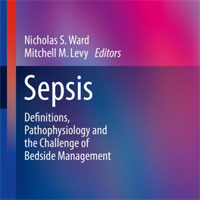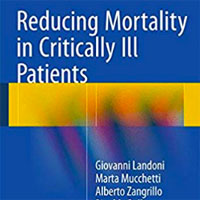Tag: mortality
Pediatric Critical Care and COVID-19
We provide early clinical and laboratory data about critical pediatric COVID-19, which suggest a variable disease but generally good outcomes compared with adults. Targets for research include the course of organ failure... read more
Computer Tomographic Assessment of Gastric Volume in Major Trauma Patients
In major trauma patients, overall stomach volume deriving from food, fluids and air must be expected to be around 400–500 mL. Gastric dilation caused by air is common but not typically associated with pre-hospital airway... read more
Factors Associated With Death in Critically Ill Patients With COVID-19 in the US
This study identified demographic, clinical, and hospital-level risk factors that may be associated with death in critically ill patients with COVID-19 and can facilitate the identification of medications and supportive therapies... read more
Infectious Meningitis and Encephalitis in ICU
Infectious meningitis and encephalitis are a major concern in ICU since they are associated with high mortality and permanent neurological injury. About 3% of central nervous system infections will be admitted in the ICU. Three... read more
Effectiveness and Safety of the Awakening and Breathing Coordination, Delirium Monitoring/Management, and Early Exercise/Mobility Bundle
Critically ill patients managed with the Awakening and Breathing Coordination, Delirium monitoring/management, and Early exercise/mobility bundle spent three more days breathing without assistance, experienced less delirium,... read more
5 Year Impact of ICU-acquired Neuromuscular Complications
ICU-acquired neuromuscular complications may impact 5-year morbidity and mortality. MRC sum score, even if slightly reduced, may affect long-term mortality, strength, functional capacity and physical function, whereas abnormal... read more
Ethnicity and Outcomes in Patients Hospitalised with COVID-19
Preliminary studies suggest that people from Black, Asian and Minority Ethnic (BAME) backgrounds experience higher mortality from COVID-19 but the underlying reasons remain unclear. Prospective analysis of registry data... read more
Hospital-level Variation in the Development of Persistent Critical Illness
Hospitals with higher risk- and reliability-adjusted 30-day mortality have a higher probability of developing persistent critical illness. Understanding the drivers of this variation may identify modifiable factors contributing... read more
WHO Resumes Hydroxychloroquine Study for COVID-19
The World Health Organization is resuming a clinical trial exploring whether the malaria drug hydroxychloroquine can effectively treat COVID-19, after pausing enrollment in the study to review safety concerns about the drug. The... read more
A Novel ECG-biomarker for Cardiac Arrest During Hypothermia
Treatment of arrhythmias evoked by accidental or therapeutic hypothermia and rewarming remains challenging. We aim to find an ECG-biomarker that can predict ventricular arrhythmias at temperatures occurring in therapeutic... read more
Impact of Protocolized Diuresis for De-resuscitation in the ICU
Using a diuresis protocol for volume de-resuscitation, we demonstrated a significant decrease in net cumulative fluid balance at 72 h following shock resolution, with potential benefit on clinical outcomes including renal... read more
Validation of Neuromuscular Blocking Agent Use in ARDS
The use of Neuromuscular Blocking Agents (NMBA) could significantly decrease mortality in moderate-to-severe acute respiratory distress syndrome (ARDS) patients and decrease the incidence of barotrauma during mechanical ventilation.... read more
Empirical Anti-MRSA Therapy Not Associated with Reduced Mortality for Patients with Pneumonia
This study suggests that empirical anti-MRSA therapy was not associated with reduced mortality for any group of patients hospitalized for pneumonia. These results contribute to a growing body of evidence that questions the... read more
1 in 5 Patients Die within 90 Days After LVAD Implantation
The aim of the study was to analyze early mortality after continuous-flow left ventricular assist device (LVAD) implantation which remains high. In the EUROMACS registry, approximately 1 in 5 patients die within 90 days... read more
Could Stress Ulcer Prophylaxis Increase Mortality in High-acuity Patients?
Although considerable uncertainty remains, the inferences from SUP-ICU and PEPTIC are consistent with the hypothesis that proton pump inhibitors (PPIs) increase the risk of death in patients with higher illness severity.... read more
It’s Insane to Keep Using Mortality As a Primary Endpoint in Critical Care Trials
Mortality is an important endpoint, so we shouldn't ignore mortality trends entirely. However, the vast majority of these will be spurious. Thus, we should generally not change practice due to them. In the history of critical... read more
Relative Hyperglycemia Predicts In-Hospital Mortality in Critically Ill Patients
Unlike absolute hyperglycemia, relative hyperglycemia, as assessed by the stress hyperglycemia ratio, independently predicts in-hospital mortality in critically ill patients across the glycemic spectrum. Future studies should... read more
Epinephrine During Resuscitation of Traumatic Cardiac Arrest and Increased Mortality
Epinephrine administered during in-hospital resuscitation was associated with lower 7-day survival rate in patients with out-of-hospital cardiac arrest (OHCA) following trauma. While we examined the outcomes of selected... read more
Early Identification of Disease Progression in Patients with Suspected Infection Presenting to the ED
In patients presenting to the emergency department (ED) with a suspected infection, the blood biomarker MR-proADM could most accurately identify the likelihood of further disease progression. Incorporation into an early sepsis... read more
Clinical Characteristics of Patients With 2019 Novel Coronavirus
In this single-center case series of 138 hospitalized patients with confirmed 2019 novel coronavirus (2019-nCoV)–infected pneumonia (NCIP) in Wuhan, China, presumed hospital-related transmission of 2019-nCoV was suspected... read more
Glucose Variability as Measured by Inter-measurement Percentage Change is Predictive of In-patient Mortality in Aneurysmal Subarachnoid Hemorrhage
Reduced glucose variability is highly correlated with in-patient survival and long-term mortality in subarachnoid hemorrhage (aSAH) patients. This finding was observed in the non-diabetic and well-controlled diabetic patients,... read more
Global, Regional, and National Sepsis Incidence and Mortality: 1990-2017
Globally, there were an estimated 60.2 million cases of sepsis in 1990 and 48.9 million cases of sepsis in 2017. This change represents a decrease of 18.8%. Of all incident cases of sepsis in 2017, 33.1 million occurred... read more









